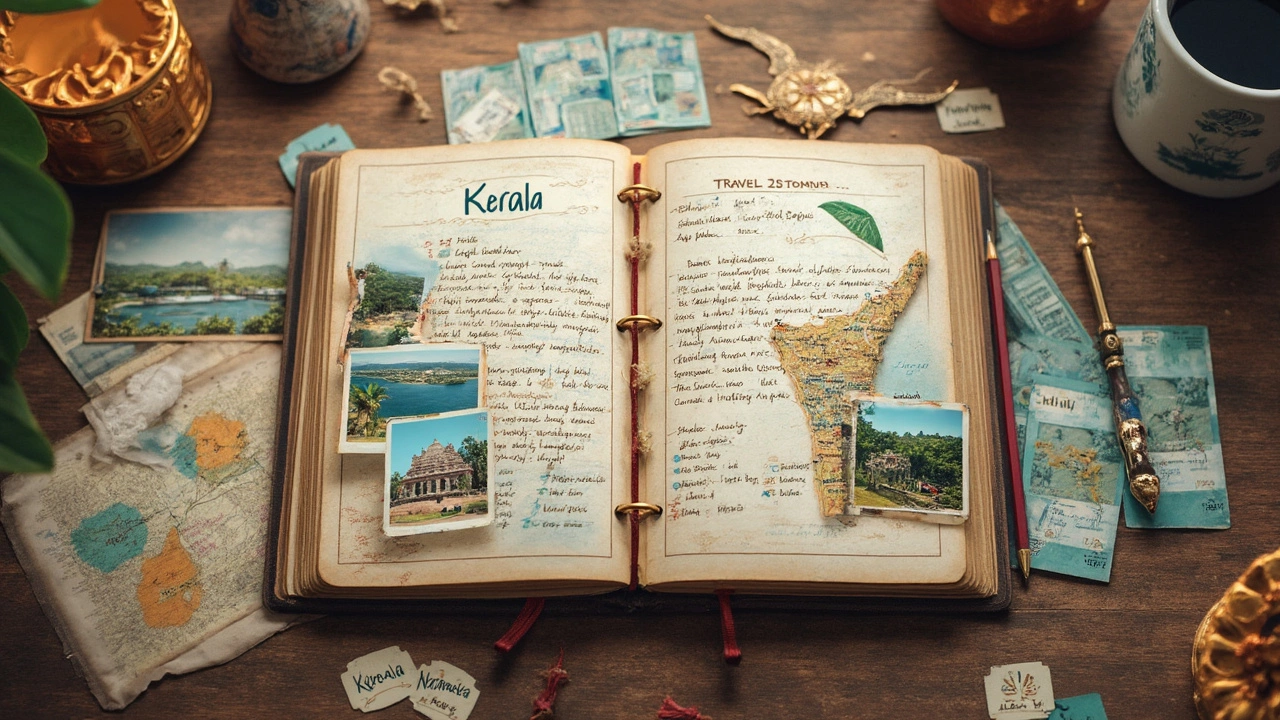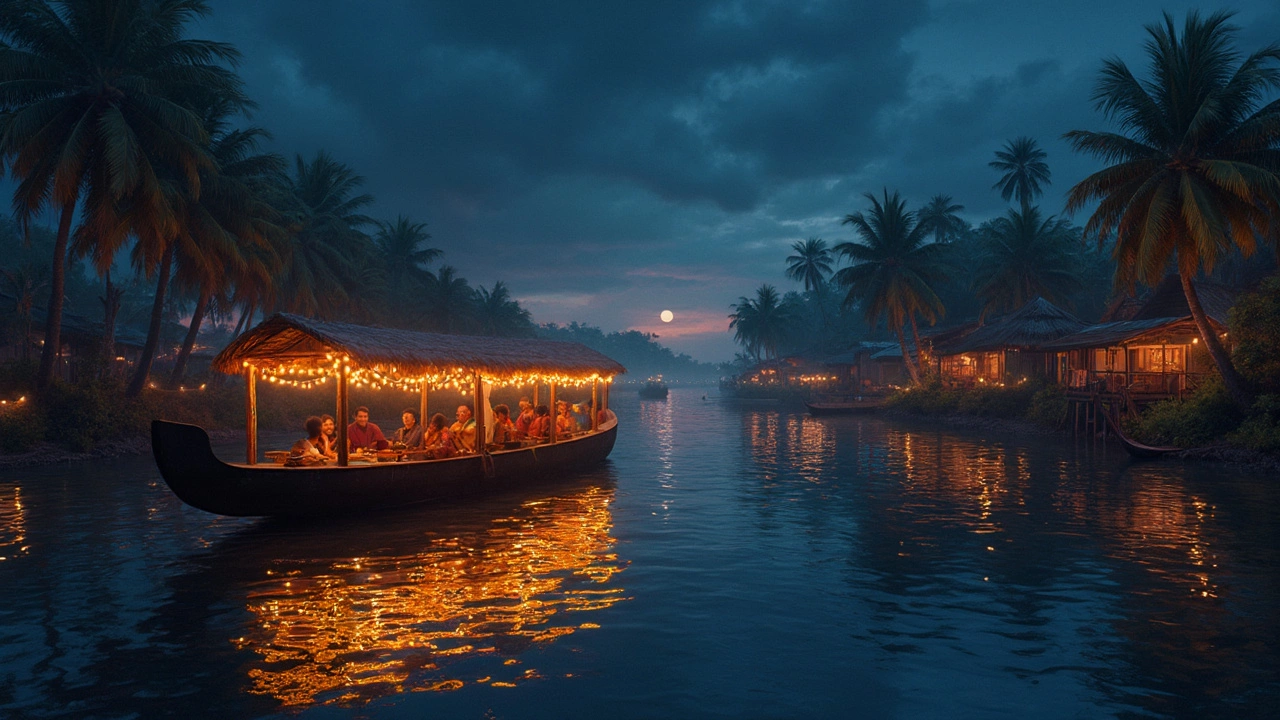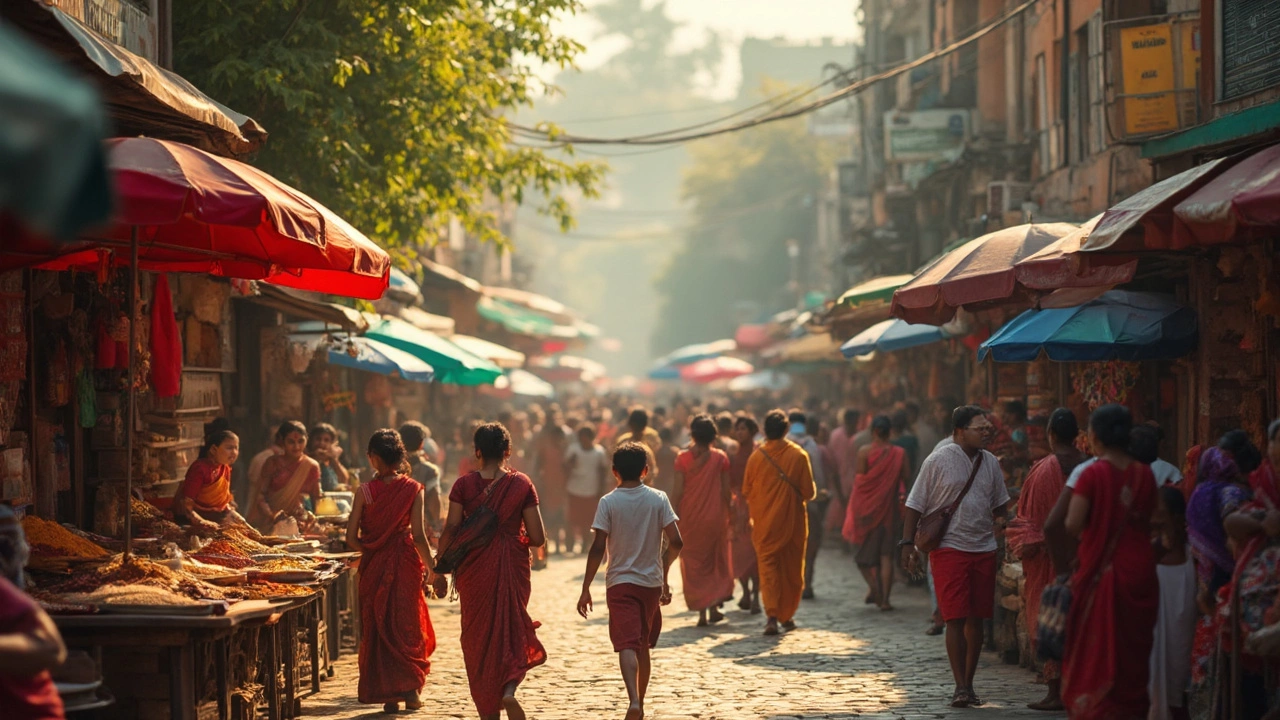When you think of travel in India, the mind usually races north: snow-dusted Himalayas, Jaipur's pink palaces, Delhi's teeming streets. But the real party? It's down south, where palm trees lean at sleepy angles and spice-laden breezes curve through coconut plantations. South India doesn't try to impress with drama; it pulls you in with color and charm you can't swipe past. Imagine floating on a Kerala backwater at sunrise while the world smells like cardamom, not car exhaust. Or, walk through centuries-old temples in Madurai, bells chiming, incense curling, with a tuktuk waiting to zip you to breakfast dosas just around the corner. If you're anything like me, by the time you're sipping your second coconut water, you'll wonder why it took so long to get here. Planning a South Indian trip isn't hard, but it pays to plot your moves carefully—this place is a patchwork of languages, landscapes, and lip-tingling street food. Leave the umbrella behind, cash in hand, and get your best shoes on (but be ready to take them off at every temple door). Here's what you need to know to make it more than just another trip, but a real story to tell back home.
Picking Your South Indian Route: States, Cities, and Itinerary Moves
South India sprawls across five major states: Kerala, Tamil Nadu, Karnataka, Andhra Pradesh, and Telangana. Each throws its own bash: tea-covered hills in Kerala, Bronze Age relics in Tamil Nadu, Mysore’s palaces sparkling at nightfall in Karnataka, Hyderabad’s bustling old markets in Telangana, and the dramatic coastlines of Andhra Pradesh. It’s tempting to squeeze all in, but trust me—it’s better to linger in a few rather than tick off too many and end up with fuzzy memories and sore feet.
Think about what gets your heart going. History nerds? Tamil Nadu’s temple trail from Chennai to Madurai should take top spot. Culture seekers might love Hyderabad’s Mughal history mixed with IT-era energy. Into jungles or elephants? Kerala’s Periyar or Bandipur in Karnataka are top-tier. Surfers slide toward Varkala or Gokarna, while foodie souls will go wild for street eats in Bangalore. Families, like mine, find Kerala’s backwaters and the old-world charm of Kochi easygoing yet magical for kids. If you only have two weeks, picking one or two neighboring states makes things way less frantic. Territorial trains and funky weather can slow things down, so keep your plans light. South India travel is about soaking up the small moments: the mango seller’s smile, the sunset colors that turn the Arabian Sea orange, the happy-chaos of a temple festival.
Here’s a sample route for two weeks that covers a bit of everything:
- Day 1-3: Chennai – Leap into street food, catch a classical dance show, visit ancient temples like Kapaleeshwarar.
- Day 4-6: Pondicherry – French cafes, pastel-colonial lanes, and golden Auroville Beach.
- Day 7-9: Madurai – Temple town with wild markets and history on every corner.
- Day 10-12: Munnar, Kerala – Tea gardens, cool breezes, and trekking.
- Day 13-14: Kochi – Portuguese-era forts, Chinese fishing nets, and the best fish curry this side of Mumbai.
Trains are your friend—they’re cheap, on time, and offer up random conversations with chai-sipping locals. For families like mine, overnight trains add a quirky adventure, and Finnian never gets bored with the constant parade of snack vendors. Domestic flights unlock more distant spots, but you’ll miss some scenery and good-natured chaos. If you have time for just one state, make it Kerala. From the backwaters to the hill stations, you’ll witness the region’s entire DNA in one giant, spicy bite.

Timing Your Trip and Nailing Local Travel Tips
Weather shapes your experience more than you’d expect, especially if you arrive in the monsoon and discover your “beach holiday” means huddling under a roadside tarp with your backpack and a stray dog. South India usually sweats through hot, humid days from March to May—tempting for budget hunters, but exhausting if you’re carting a pram or slow to adapt. The sweet-spot? November to February. Expect blue skies, breezy evenings, and festivals galore (think Pongal, Kerala’s boat races, and more). Hill stations like Ooty or Munnar get a touch chilly, but nothing a pullover can’t fix.
| State | Best Months to Visit | Notable Festivals | Rainy Season |
|---|---|---|---|
| Kerala | Dec-Feb | Onam (Aug/Sep) | Jun-Sep |
| Tamil Nadu | Nov-Mar | Pongal (Jan) | Oct-Dec |
| Karnataka | Oct-Mar | Dasara (Oct) | Jun-Sep |
| Telangana | Nov-Feb | Bonalu (Jul/Aug) | Jun-Sep |
| Andhra Pradesh | Nov-Feb | Ugadi (Apr) | Jun-Sep |
Keep in mind, South India is less tourist-packed than the north, but book ahead if you’re aiming for festival times. Hotels sell out when temples throw city-wide parties—sometimes there are elephants blocking traffic, and even Google Maps gives up. Don’t pack heavy; you’ll mostly wear loose cottons and sandals. But bring long pants or a skirt: temples are strict about covering up, and you’ll get turned away at the door for showing knees or shoulders. Leave the fancy tech and jewelry at home. Most places run on cash or simple payment apps (ask locals for help; they’re honest and usually find it funny if you bumble through a transaction).
Public transport is surprisingly good. Buses between cities—think air-con Volvos, not the rickety death-traps—and local trains are reliable, though schedules change fast. Tuk-tuks (rickshaws) are everywhere. Always agree on a price first—apps like Ola or Uber work well in bigger towns. For convenience, especially with kids, hire a driver for a day or two to shuttle you between hill stations, spice farms, and tea estates. Don’t stress about language; even small-town folks know some English, and gestures bridge any gaps. If you’re stuck, a smile and a raised eyebrow do wonders.

Food, Culture, Experiences: What Not to Miss
Forget what you know about Indian food—the South eats completely differently from butter-chicken northern cousins. Here, breakfast is king: dosas as wide as your forearm, idlis that bounce like soft clouds, hot filter coffee poured from great heights into stainless cups. Annie is mad for Kerala’s appam, which is sort of a fluffy pancake with a coconut twist. Finnian? He just dunks everything into sambhar. Point is, there’s something for everyone, even picky eaters. Spice is real here; I’ve seen grown adults cry over Andhra chilli curries. Carry tissues and don’t skimp on lassi. Many restaurants are strictly vegetarian, especially near temples (no eggs or meat allowed), but you’ll find fresh fish along the coast. Always drink bottled water—don’t risk the tap. If in doubt, check where the locals queue. Clean hands = healthy holiday.
Cultural surprises are everywhere. If you’re around for a festival, don’t hesitate—join the crowd and let yourself be swept along. In Tamil Nadu, Pongal brings giddy village parties and sugarcane so sweet it’ll rattle your teeth. Kochi’s Biennale lures artists from across the globe every two years. Dance forms like Bharatanatyam or Kathakali stun with their energy and costume detail; even restless kids stop and stare. Temples aren’t just stops for Instagram glory—they thrum with real-life music and daily rituals. Remove your shoes, silence your phone, and just watch. It’s wild and wonderful all at once.
Nature lovers, hike the Western Ghats for misty views and wild elephants (book a guide for safety). Take a backwater boat in Alappuzha—bamboo houseboats let you nap to birdsong and distant temple bells. Go wildlife spotting in Wayanad or Kabini. Surf beaches in Varkala roll out red cliffs and cool shacks; if you’re lucky, dolphins leap past your breakfast table. Shopping? You’ll find silk saris in Kanchipuram, filter coffee to carry home, and carved sandalwood trinkets in Mysore. Bargain politely. People are proud of their crafts—ask stories, and you’ll come home with more than souvenirs, maybe even a WhatsApp contact or two.
Travel insurance is smart, especially if you’re off the beaten path with kids in tow. Always check vaccines—Japanese encephalitis isn’t as rare as it sounds. Most pharmacies are helpful for those little travel emergencies (hello, mystery bug bites), and locals will go out of their way to help. Wi-fi is slow in villages but hotels and homestays usually have decent connections. Don’t fuss over ‘must-sees’—trust your gut and take a detour. South India’s magic mostly happens when you throw away the plan and just follow where the cinnamon scent (or the next fish curry) leads you.
